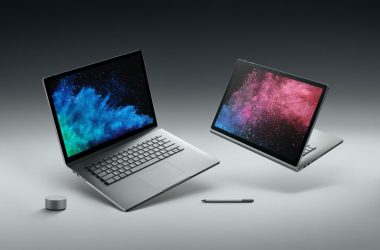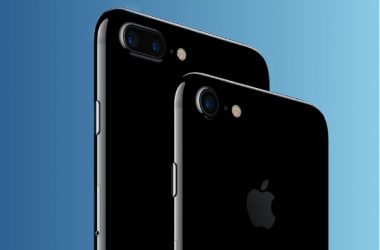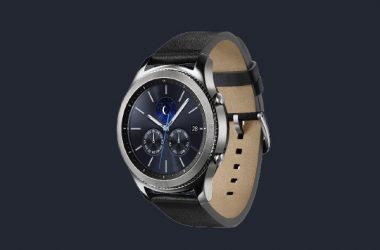 It’s no Duke Nukem Forever, but the recently-released white iPhone 4 is one of those products that seemed it would never actually come to market. Originally slated for release in June 2010, the white version of Apple’s iPhone 4 fell prey to delay after delay, and it didn’t hit stores until late April 2011.
It’s no Duke Nukem Forever, but the recently-released white iPhone 4 is one of those products that seemed it would never actually come to market. Originally slated for release in June 2010, the white version of Apple’s iPhone 4 fell prey to delay after delay, and it didn’t hit stores until late April 2011.
Apple never released an official statement specifying why the white iPhone 4 was so slow to get out of the gate, but there’s never a shortage of rumors or speculation when Apple’s involved. According to the Cult of Mac’s Leander Kahney, who cited “a source with connections to Apple who asked to remain anonymous,” camera-performance issues were a big reason for the delay. More specifically, the iPhone’s white glass case allowed light to seep back into the body and flood the camera’s sensor, producing overexposed photos.
“A source with connections to Apple who asked to remain anonymous” isn’t exactly the gold standard in terms of qualified attribution, but Apple cofounder Steve Wozniak is about as good a source as it gets. During an interview on The Engadget Show earlier this year, Wozniak said that pictures taken with his prerelease modded white iPhone 4–made with “defective parts” from Apple’s first production run on the white iPhone–took “bad flash photos” that didn’t match up to those taken with the black iPhone.
Once the white iPhone 4 finally became available, an early tear-down of the white iPhone 4 by a Japanese-language blog revealed that the camera module was noticeably different from the one found in the black iPhone 4. The white iPhone’s camera lens looked to be a bit more recessed, possibly to reduce the distance between the glass and the sensor and eliminate or reduce the light-leakage issue.
So What’s the Big Deal?
For most people, none of that really matters. What does matter is whether one color of iPhone 4 or the other is better for photo and video quality; with the iPhone becoming the most popular photography device on Flickr, that’s a more important question than it may seem on the surface.
In last year’s hotly contested smartphone camera battle, IDG rated the black iPhone 4 as having the best camera overall among smartphones at that time.
Eager to see if the white iPhone 4 had the same photography chops; IDG team ran it through the same image-quality tests as its predecessor.
Here’s the shocker: Based on PCWorld Labs’ standardised image- and video-quality testing, the different flavors of iPhone 4 produce slightly different flavors of photos and video.
The differences are most dramatic when using each camera’s flash to snap portraits. The white iPhone 4 produced noticeably different skin tones and color depth with the flash enabled than the black version of the same phone. On the video side, the white iPhone 4 produced slightly sharper footage, with better contrast and brighter colors in low-light situations.
This doesn’t necessarily mean that the camera’s lenses and sensors are different. The white iPhone 4’s flash may illuminate subjects differently due to reflection off the phone’s bright backside; the software responsible for adjusting white balance and exposure settings may be optimized for one iPhone’s flash photos but not the other; the difference in camera module construction may have noticeable results in the images; or it might just be that the two test phones we used were built differently. But for what it’s worth, our tests showed differences between the two iPhone 4 cameras.
To gauge how differently each iPhone 4 camera’s images looked, test shots were snapped with a white iPhone 4 and a black iPhone 4, both loaded with iOS 4.3.3 firmware. The team then printed out unmarked sample images shot in our standard lab-testing environment for photo quality and showed them to a panel of seven editors.
Five of the seven editors said that the test shots taken with the white iPhone and those taken with the black iPhone looked as if they had been shot with different cameras. Of the remaining two editors, one said that the test shots looked as if they might have been taken at different flash intensities, and the other said that in-phone image-processing software might have been handling the images differently.
Flash Exposure Tests: White iPhone 4 vs. Black iPhone 4
Several editors said that the white iPhone 4 added a “weird colour tint” to our flash exposure shot, which contributed to inaccurate skin tones.
A few editors noted deeper blues and purples in the white iPhone 4 test shot, as well as a warmer overall color temperature. The black iPhone 4 was described as having a softer, more-balanced flash, as well as better white-balance automation when using the flash.
Still Life Tests: White iPhone 4 vs. Black iPhone 4
This test was taken with the flash turned off, and the differences were far more subtle than they were in the flash-exposure test.
Editors noted slightly deeper blues in the white iPhone 4 test shot, as well as noticeably sharper detail. Colour accuracy between the two cameras was about equal in this test.
Sharpness/Distortion Tests: White iPhone 4 vs. Black iPhone 4
This was another test that showcased more-noticeable differences between the two cameras.
The white iPhone 4 was described as having sharper text and better contrast, but editors pointed out that the white iPhone test image displayed more chromatic aberration in the sample text than in the test shot that was taken with the black iPhone 4. All seven editors agreed that the white iPhone 4 snapped sharper test images than the black iPhone 4.
Low-Light Video Tests: White iPhone 4 vs. Black iPhone 4
In bright light situations, the IDG team didn’t see much of a difference in video quality between the two iPhone flavors. Shooting video in low light showcased a few notable differences. The white iPhone 4 produced low-light video with improved white balance; brighter reds, yellows, and browns; and slightly better sharpness and contrast when compared to footage shot with the black iPhone 4.
Conclusions: White iPhone 4 vs. Black iPhone 4 Camera Tests
So, between the white and black iPhone 4, is one a better choice for photos and video? Yes, no, and maybe.
In our tests, the white iPhone 4 turned in better results for image sharpness and colour vibrancy in low-light video, while the black iPhone 4 did a better job in terms of flash exposure and color accuracy. However, we can’t rule out the possibility that the discrepancies the IDG team witnessed were simply due to the fact that no two devices are built exactly the same, regardless of what color case they come in.
Other than the differences in sharpness and low-light video quality, the image-color discrepancies are all fixable by using one of several image-retouching apps available for iOS devices, and both phones are standouts in the smartphone class when it comes to capturing images and video.
The wide array of photo-editing, photo-sharing, and photo-effects apps that are available for the iPhone may make the subtle differences IDG saw in each iPhone camera a moot point.





